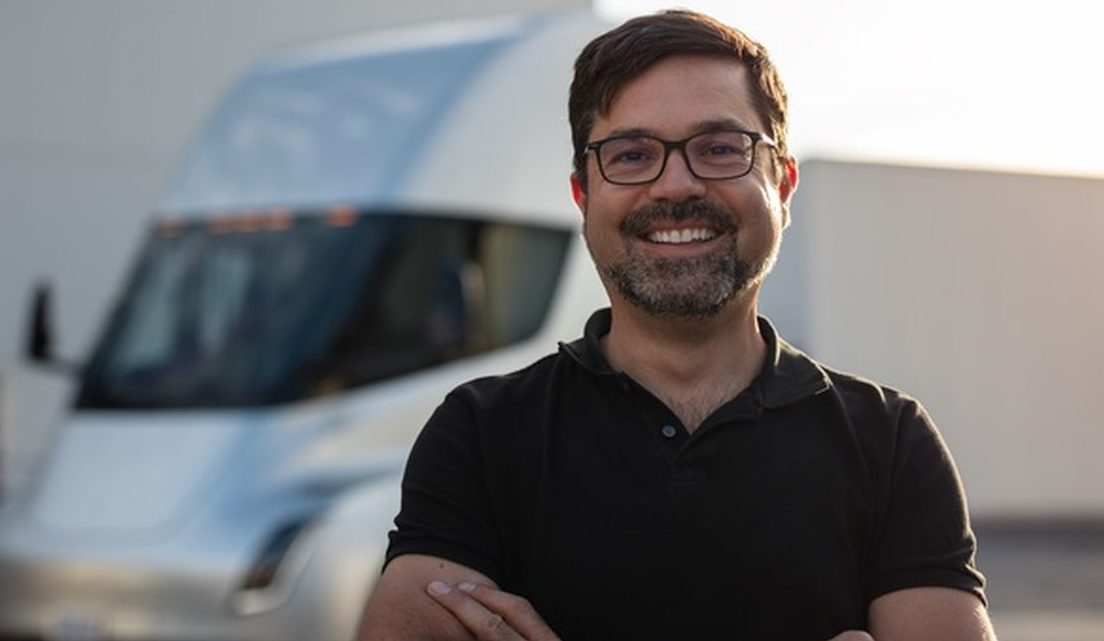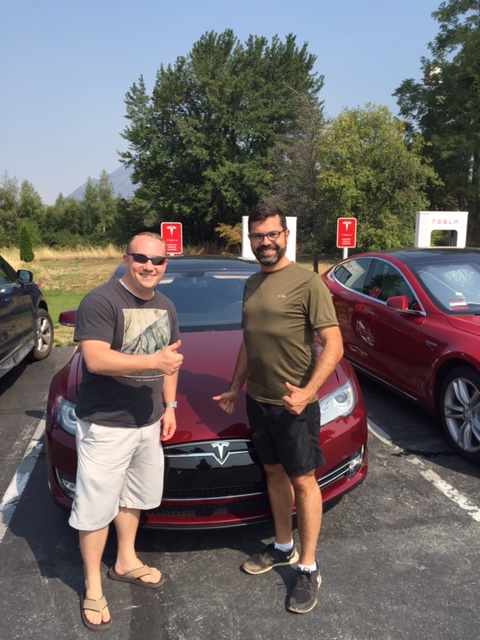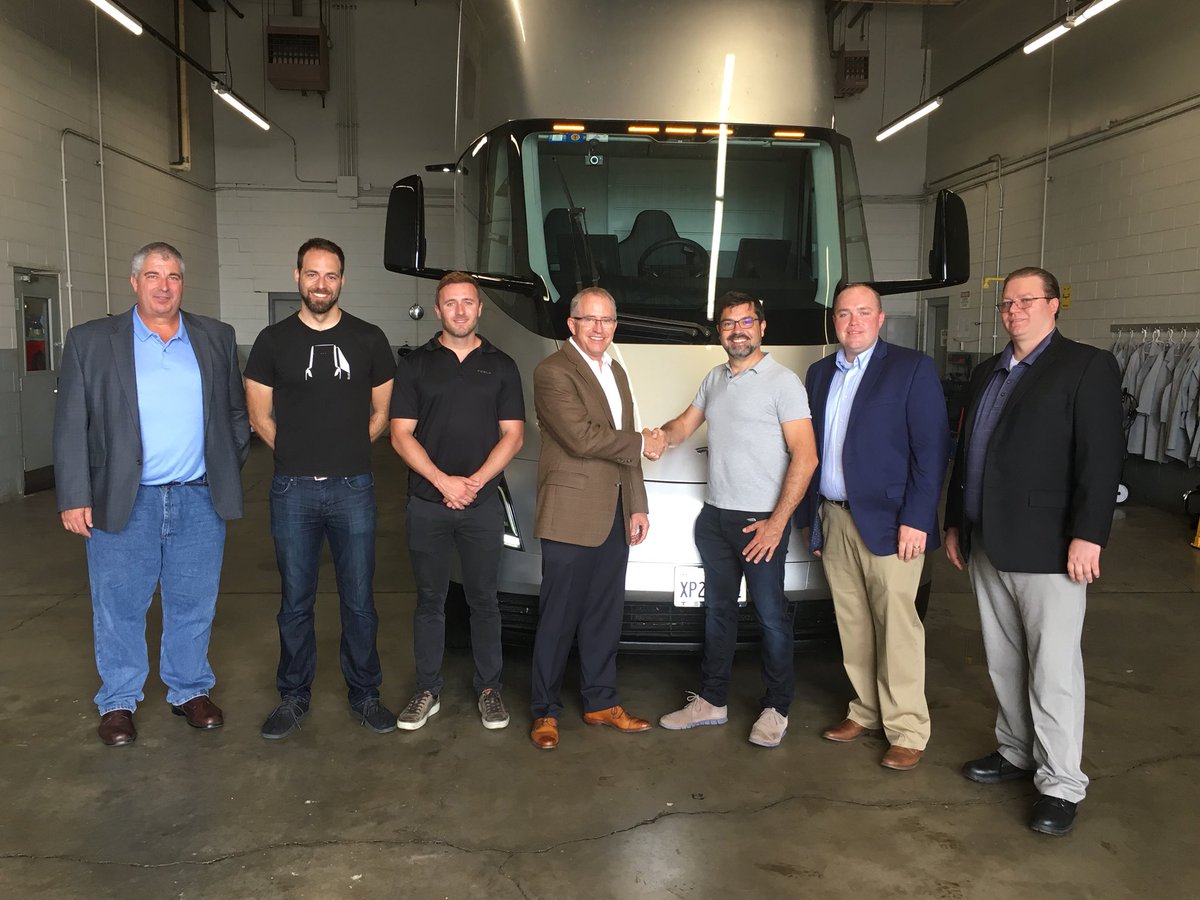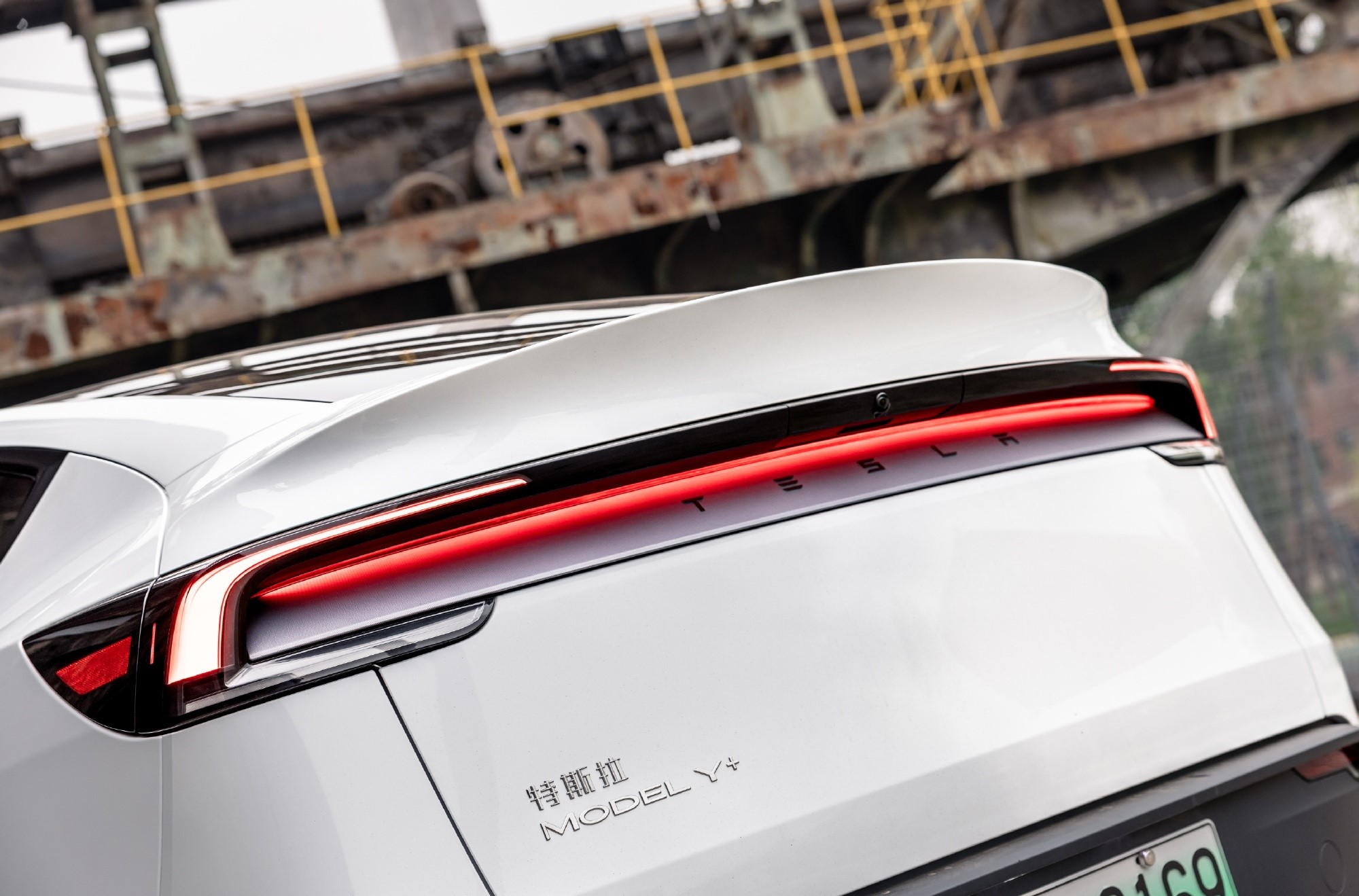

Investor's Corner
Tesla’s veteran problem solver Jerome Guillen is Elon Musk’s most strategic appointment yet
Earlier this month, Tesla CEO Elon Musk announced a series of strategic promotions that are aimed at taking the company to reach new heights in the years to come. Among the promotions, Elon Musk’s appointment of veteran accomplisher Jerome Guillen as the company’s new President of Automotive stood out. As the end of the third quarter approaches, it is starting to look like Elon Musk’s promotion of the hands-on executive was the correct strategy.
Jerome Guillen joined Tesla back in 2010 as the director of the Model S program. Prior to his employment at Tesla, Jerome served as the project leader for Daimler’s Freightliner Cascadia program, and eventually as head of the company’s Business Innovation unit. By the time he left for Tesla, Daimler’s Business Innovation unit was profitable and self-funding.
When Jerome joined the electric car maker, Tesla was still a fledgling startup that only produced and delivered a small number of its two-door Roadster to a select group of customers. Being the first vehicle that the company designed from the ground up, a lot was riding on the Model S, particularly as critics of the company were quick to dismiss the electric car as “vaporware.” Guillen was a hands-on executive, and for some early customers of the Model S, he became the go-to person when issues arose.

And issues did arise. When Tesla started delivering the Model S to reservation holders, the company lacked sufficient sales and service centers. Tesla was delivering vehicles directly to people’s homes, and while this worked well for the first few hundred handovers in California, it became a big logistical headache for the company when customers from faraway states started ordering the electric car. Elon Musk, for his part, opted to have Jerome add sales, service, and deliveries to his portfolio. The hands-on executive handled the task well, even developing a reputation for being incredibly responsive to emails and concerns from regular customers.
Early Model S adopter Andrew Wolfe of Los Gatos, California noted in a statement to Bloomberg that he was among the customers who were in constant communication with the executive. Wolfe noted that Jerome was always open to suggestions, such as where Tesla should consider opening additional service centers, as well as the company’s points for improvement in terms of loaner vehicles.
Jerome’s work with the Model S program would ultimately help lay the groundwork for the company’s following vehicles, the Model X SUV and later, the Model 3. The executive briefly took a leave of absence from the company in 2015, but later returned to head the Tesla Semi program. Over the past months, sightings of the Semi across the United States would feature Jerome from time to time, accompanying the long-hauler’s hand-built alpha prototype on its road tests.

While he was heading the Tesla Semi program, Jerome’s out-of-the-box problem-solving skills would prove useful for the company’s overall operations. Back in June, Tesla made headlines when Elon Musk revealed that a new Model 3 assembly line had been set up inside a sprung structure on the grounds of the Fremont factory. The line, dubbed as GA4, was ultimately responsible for giving the company’s production the boost it needed to hit its target of producing 5,000 Model 3 a week before the end of the second quarter. Analysts from Evercore ISI who toured the Fremont factory later noted that GA4 “looked very much like general assembly at other auto plants which we have visited,” and that the “facility looks set to be permanent and in theory should be able to support much faster cycle times.” As Elon Musk would later reveal, GA4 was Jerome Guillen’s brainchild.
The appointment of an executive such as Jerome as the President of Automotive could prove to be Elon Musk’s most strategic move this third quarter. At this point in Tesla’s growth, with hundreds of thousands of reservations in line for the Model 3, the company is pretty much in a situation similar to the one it faced when it was struggling to deliver the Model S to customers across the US. From this perspective, at least, Jerome Guillen appears to be the right man for the job.
It remains to be seen what Jerome’s full responsibilities are now that he is serving as President of Automotive, but amidst Tesla’s end-of-quarter delivery push for the Model 3, the company has begun adopting some out-of-the-box solutions for its current logistical problems. In a recent tweet, for example, Elon Musk noted that Tesla is experiencing a bottleneck in the car carrier trailers transporting vehicles from the Fremont factory to its delivery centers. To help address this issue, Musk stated that Tesla has begun building its own car carriers to help foster quicker deliveries. This is speculation, but such an unorthodox solution carries some very Jerome Guillen-like undertones.
Investor's Corner
Tesla could save $2.5B by replacing 10% of staff with Optimus: Morgan Stanley
Jonas assigned each robot a net present value (NPV) of $200,000.

Tesla’s (NASDAQ:TSLA) near-term outlook may be clouded by political controversies and regulatory headwinds, but Morgan Stanley analyst Adam Jonas sees a glimmer of opportunity for the electric vehicle maker.
In a new note, the Morgan Stanley analyst estimated that Tesla could save $2.5 billion by replacing just 10% of its workforce with its Optimus robots, assigning each robot a net present value (NPV) of $200,000.
Morgan Stanley highlights Optimus’ savings potential
Jonas highlighted the potential savings on Tesla’s workforce of 125,665 employees in his note, suggesting that the utilization of Optimus robots could significantly reduce labor costs. The analyst’s note arrived shortly after Tesla reported Q2 2025 deliveries of 384,122 vehicles, which came close to Morgan Stanley’s estimate and slightly under the consensus of 385,086.
“Tesla has 125,665 employees worldwide (year-end 2024). On our calculations, a 10% substitution to humanoid at approximately ($200k NPV/humanoid) could be worth approximately $2.5bn,” Jonas wrote, as noted by Street Insider.
Jonas also issued some caution on Tesla Energy, whose battery storage deployments were flat year over year at 9.6 GWh. Morgan Stanley had expected Tesla Energy to post battery storage deployments of 14 GWh in the second quarter.
Musk’s political ambitions
The backdrop to Jonas’ note included Elon Musk’s involvement in U.S. politics. The Tesla CEO recently floated the idea of launching a new political party, following a poll on X that showed support for the idea. Though a widely circulated FEC filing was labeled false by Musk, the CEO does seem intent on establishing a third political party in the United States.
Jonas cautioned that Musk’s political efforts could divert attention and resources from Tesla’s core operations, adding near-term pressure on TSLA stock. “We believe investors should be prepared for further devotion of resources (financial, time/attention) in the direction of Mr. Musk’s political priorities which may add further near-term pressure to TSLA shares,” Jonas stated.
Investor's Corner
Two Tesla bulls share differing insights on Elon Musk, the Board, and politics
Two noted Tesla bulls have shared differing views on the recent activities of CEO Elon Musk and the company’s leadership.

Two noted Tesla (NASDAQ:TSLA) bulls have shared differing views on the recent activities of CEO Elon Musk and the company’s leadership.
While Wedbush analyst Dan Ives called on Tesla’s board to take concrete steps to ensure Musk remains focused on the EV maker, longtime Tesla supporter Cathie Wood of Ark Invest reaffirmed her confidence in the CEO and the company’s leadership.
Ives warns of distraction risk amid crucial growth phase
In a recent note, Ives stated that Tesla is at a critical point in its history, as the company is transitioning from an EV maker towards an entity that is more focused on autonomous driving and robotics. He then noted that the Board of Directors should “act now” and establish formal boundaries around Musk’s political activities, which could be a headwind on TSLA stock.
Ives laid out a three-point plan that he believes could ensure that the electric vehicle maker is led with proper leadership until the end of the decade. First off, the analyst noted that a new “incentive-driven pay package for Musk as CEO that increases his ownership of Tesla up to ~25% voting power” is necessary. He also stated that the Board should establish clear guidelines for how much time Musk must devote to Tesla operations in order to receive his compensation, and a dedicated oversight committee must be formed to monitor the CEO’s political activities.
Ives, however, highlighted that Tesla should move forward with Musk at its helm. “We urge the Board to act now and move the Tesla story forward with Musk as CEO,” he wrote, reiterating its Outperform rating on Tesla stock and $500 per share price target.
Tesla CEO Elon Musk has responded to Ives’ suggestions with a brief comment on X. “Shut up, Dan,” Musk wrote.
Cathie Wood reiterates trust in Musk and Tesla board
Meanwhile, Ark Investment Management founder Cathie Wood expressed little concern over Musk’s latest controversies. In an interview with Bloomberg Television, Wood said, “We do trust the board and the board’s instincts here and we stay out of politics.” She also noted that Ark has navigated Musk-related headlines since it first invested in Tesla.
Wood also pointed to Musk’s recent move to oversee Tesla’s sales operations in the U.S. and Europe as evidence of his renewed focus in the electric vehicle maker. “When he puts his mind on something, he usually gets the job done,” she said. “So I think he’s much less distracted now than he was, let’s say, in the White House 24/7,” she said.
TSLA stock is down roughly 25% year-to-date but has gained about 19% over the past 12 months, as noted in a StocksTwits report.
Investor's Corner
Cantor Fitzgerald maintains Tesla (TSLA) ‘Overweight’ rating amid Q2 2025 deliveries
Cantor Fitzgerald is holding firm on its bullish stance for the electric vehicle maker.

Cantor Fitzgerald is holding firm on its bullish stance for Tesla (NASDAQ: TSLA), reiterating its “Overweight” rating and $355 price target amidst the company’s release of its Q2 2025 vehicle delivery and production report.
Tesla delivered 384,122 vehicles in Q2 2025, falling below last year’s Q2 figure of 443,956 units. Despite softer demand in some countries in Europe and ongoing controversies surrounding CEO Elon Musk, the firm maintained its view that Tesla is a long-term growth story in the EV sector.
Tesla’s Q2 results
Among the 384,122 vehicles that Tesla delivered in the second quarter, 373,728 were Model 3 and Model Y. The remaining 10,394 units were attributed to the Model S, Model X, and Cybertruck. Production was largely flat year-over-year at 410,244 units.
In the energy division, Tesla deployed 9.6 GWh of energy storage in Q2, which was above last year’s 9.4 GWh. Overall, Tesla continues to hold a strong position with $95.7 billion in trailing twelve-month revenue and a 17.7% gross margin, as noted in a report from Investing.com.
Tesla’s stock is still volatile
Tesla’s market cap fell to $941 billion on Monday amid volatility that was likely caused in no small part by CEO Elon Musk’s political posts on X over the weekend. Musk has announced that he is forming the America Party to serve as a third option for voters in the United States, a decision that has earned the ire of U.S. President Donald Trump.
Despite Musk’s controversial nature, some analysts remain bullish on TSLA stock. Apart from Cantor Fitzgerald, Canaccord Genuity also reiterated its “Buy” rating on Tesla shares, with the firm highlighting the company’s positive Q2 vehicle deliveries, which exceeded its expectations by 24,000 units. Cannacord also noted that Tesla remains strong in several markets despite its year-over-year decline in deliveries.
-

 Elon Musk1 day ago
Elon Musk1 day agoWaymo responds to Tesla’s Robotaxi expansion in Austin with bold statement
-

 News1 day ago
News1 day agoTesla exec hints at useful and potentially killer Model Y L feature
-

 Elon Musk2 days ago
Elon Musk2 days agoElon Musk reveals SpaceX’s target for Starship’s 10th launch
-

 Elon Musk3 days ago
Elon Musk3 days agoTesla ups Robotaxi fare price to another comical figure with service area expansion
-

 News1 day ago
News1 day agoTesla’s longer Model Y did not scale back requests for this vehicle type from fans
-

 News1 day ago
News1 day ago“Worthy of respect:” Six-seat Model Y L acknowledged by Tesla China’s biggest rivals
-

 News2 days ago
News2 days agoFirst glimpse of Tesla Model Y with six seats and extended wheelbase
-

 Elon Musk2 days ago
Elon Musk2 days agoElon Musk confirms Tesla is already rolling out a new feature for in-car Grok








